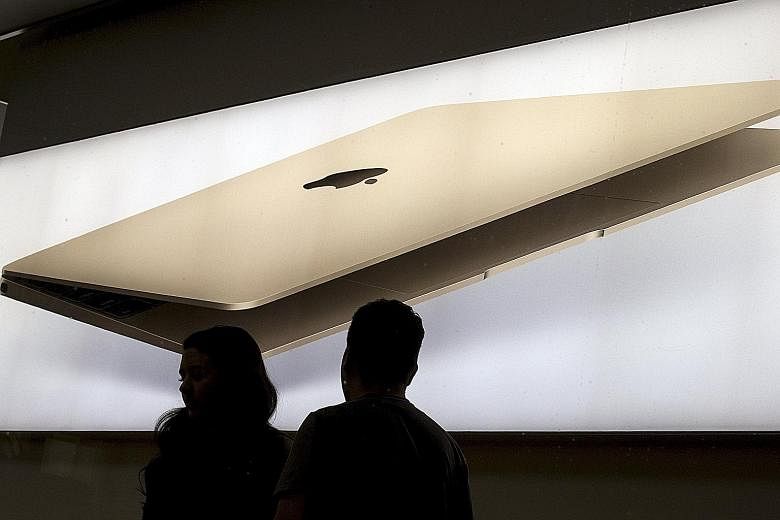SAN FRANCISCO • Apple turned in another quarter of enviable revenue and profit growth, fuelled by sales of the iPhone. But the results raised a perennial question for the world's most valuable company: How can it keep its growth streak alive?
The issue was stoked by Apple's muted forecast for its all-important holiday quarter, as well as CEO Tim Cook's unwillingness to go into detail in an earnings conference call about how Apple plans to rev up sales next year.
Overall, Apple posted a profit of US$11.1 billion (S$15.5 billion) for its fiscal fourth quarter, up 31 per cent from a year ago. Revenue was US$51.5 billion, up 22 per cent from last year. The results exceeded Wall Street estimates.
Yet while the performance was bolstered by sales of the iPhone - Apple said it sold 48 million iPhones in the quarter, up from 39 million in the same period last year - the company was more cautious about sales for the key holiday period.
Apple projected revenue of US$75.5 billion to US$77.5 billion for the end-of-year quarter. While the sheer numbers are huge, the low end of the forecast fell below Wall Street estimates and would amount to anaemic growth of less than 4 per cent from a year ago.
The last time Apple's quarterly sales growth fell below 4 per cent was in mid-2013.
When asked about Apple's 2016 growth prospects, Mr Cook said: "We don't guide beyond a quarter."
Apple's stock price, which had initially risen after the earnings results, later ended up flat.
The growth question is a quandary created by Apple's own success. The company has got investors accustomed to double-digit growth rates and enormous profit. That sets a high bar for Apple to clear each time and creates tough comparisons to beat later.
Apple's holiday quarter last year was enormous, driven by the unveiling of the larger-screen iPhone 6 Plus, analysts said, making it difficult to compare to this time around.
To keep up this kind of growth, analysts said Apple had only a few levers to pull: Attract more first-time customers, get more people to switch from rival Android-based phones and continue to grow in China.
"We didn't get great visibility into the central question that we have about Apple," said Sanford C. Bernstein analyst Toni Sacconaghi. "Can the iPhone grow in fiscal 2016?"
Mr Cook for the most part shrugged off the growth question. In the conference call, he said Apple's full fiscal year revenue was equivalent to that of almost 90 per cent of the companies in the Fortune 500.
Apple is going into 2016 with a full slate of refreshed products. In late September, the company introduced its newest iPhone models, the 6s and 6s Plus. It also announced a larger iPad, the iPad Pro, and will begin shipping a new Apple TV this week.
While the iPhone continues to grow, the iPad has been facing declines. For the fiscal fourth quarter, Apple said iPad sales dropped 20 per cent from a year ago, making it the seventh consecutive quarter that sales of the tablet have slipped.
The company did not break out sales of the Apple Watch, which debuted in April.
But the category called "other products" - which includes the watch -posted US$3 billion in revenue in the quarter, up from US$2.6 billion in the previous quarter, which was the first quarter that included sales of the device.
One of Apple's fastest-growing markets - China - continued to grow. Sales in the region that Apple calls Greater China jumped 99 per cent in the quarter to US$12.5 billion. Investors have been scrutinising the China business given that the country has been cutting interest rates to shore up a slowing economy.
Apple also said it would pay investors a cash dividend of 52 US cents a share.
NEW YORK TIMES

